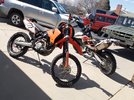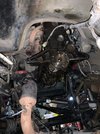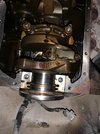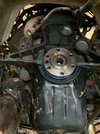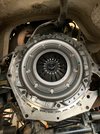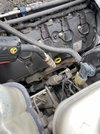So I’m going to try this here as I think most are tool and shop minded and maybe I won’t get verbally abused like I did on Facebook over the weekend.
I belong to the Monaco owner’s group on Facebook and there seems to have been a lot of people with air spring issues lately so I thought I would post up how “I” chose to perform the repair and maybe it would help others. I don’t think I’ll make that mistake again as I’ve discovered lately that there are a lot of idiots on the Monaco Facebook page, or maybe it’s just Facebook period, which is why I don’t participate much on that platform.
I used to say there’s no such thing as a stupid question but I’ve since changed my mind because there are a LOT of them on that particular group’s page. It seems like years ago people would do at least some research on their own and even open the owners manual before opening their mouths for help but anymore people seem to speak first before thinking. Then there’s the keyboard genius’ that know everything and post erroneous information when someone does ask a question which is worse than the person asking the question.
I realize that it’s the internet but for hell's sake I don’t know where some of these people come up with their idiotic answers and all it does is lead people more astray and cause them more confusion, frustration and stress. If these people don’t know the answers they should keep quiet and let others pass along legitimate information.
I’m tired of trying to help others with their Monaco related issues in that group. I don’t know if it’s because the prices have come down on these coaches and the pandemic of the past year has gotten every idiot out looking for a good quality RV or what it is but my hell the high volume of idiocy in that group is staggering.
I posted up pictures and an explanation of how I went about my suspension’s air spring replacement and even after explaining in detail how I supported the weight of our coach I still had people calling me an idiot or nuts or crazy because I was using automotive jackstands and floor jack to raise and support our coach. [emoji35] Too stupid to read the comments AND decipher the pictures but they know it all.
Let me try again......
The air spring replacement is not a difficult task and there’s no need to cut holes in the sides of the coach like I’ve seen some do.
Most are using blocks or “cribbing” placed between the coach’s frame rails and the suspension’s H-frame then lifting and supporting the axle as normal. Once the air springs (air bags) are unbolted you then must fight to compress the air bags enough to get the upper and lower studs out of the holes in the upper and lower mounting brackets. This works perfectly other than the efforts needed to compress the old then the new air bags for removal and installation.
I chose to go a different route. I used my tall 22-ton jackstands with the weight of the coach sitting straight down on them. Before beginning I raised the coach as high as I could with the coach’s air system and placed the jackstands just above the steer axle with positive engagement with the chassis.
Now this allowed me to only need a smaller 3-ton floor jack to raise and lower the front suspension. I raised one side slightly and removed a steer tire/wheel. Now I can sit up under the coach and have access to the air bags. I removed the mudflap and hulla skirt material that protects each air bag for better access but that only requires removal of a few tech screws on each.
Now I could reach around the H-frame and air bag to each of the fasteners and the 90-degree air fitting. I removed the air line, then the air fitting, then the 3/4” NPT to 1/4” NPT adapter and lastly grabbed my 1/2” drive fine tooth ratchet and 3/4” socket to break the two upper nuts loose (I hit them with some Aerokroil just before starting). Once the nuts were broken loose j could use my Snap-on FAR72 high torque 3/8” air ratchet to zip the nuts off the top of the air bags. I was able to do this on all but two upper buts where I had to use a ratcheting wrench due to gussets being in the way. The lower bolts were easily accessed with a 1/2” impact gun and 3/4” socket in which were easily zipped off in no time.
Once the fittings and upper & lower nuts were removed came the easy part. I simply and slowly lowered the 3-ton floor jack and the suspension pulled away from the chassis allowing the air bag to sit there with plenty of space to reach in and lift the old one out and set the new one in place. Then raised the floor jack and made sure the studs properly engaged with the holes and reassemble the nuts and air fittings then move on to the next. Easy peezy.
Now for the pictures depicting the process.
Mudflap and hulla skirt (brush) removed for better access to the old air bag.
Using 1/2” fine tooth ratchet with about a 16" long cheater on it.
Here you can see a slight gap at the top of the air bag as it fell away during fastener removal.
Lowered the suspension down and the air bag is completely free from the upper bracket.
Now simply lift the air bag out.
They were due for replacement. I’ve been keeping an eye on them for the last couple of year. They started as just weather cracking two years ago then last year I noticed some advance deterioration on the lower roll and by the end of last year’s travel season there were small pieces of rubber flaking off. None had developed leaks yet and I’m sure they could have gone a bit longer as I’ve seen worse still in service but I’m a big proponent of replacing things prior to failure. I figured this would be much more problematic of a repair out on the road and ruin a vacation so I opted to replace them prior to this year’s travel season.
New one ready to install the reducer and apply anti-seize to the studs prior to installation.
New air bag easily slid into place.
Raised the suspension up using my small 3-ton automotive floor jack.
Air bag fully engaged in the upper and lower mounting brackets and ready to install the nuts and tighten in place.
That air bag replaced and shock reinstalled. Ready to reinstall the hulla skirt and mudflap then move on the next air bag.
Next air bag showing the hulla skirt before removal.
Driver’s side front of steer tire didn’t require shock removal. The easiest air bag to replace.
Old air bag removed.
Moved around to the passenger’s side. This one on passenger’s side in front of the steer tire was the most difficult due to several large wire looms/bundles complicating access but just took a few minutes longer.
Passenger’s side just behind steer tire replaced.
Ready to reinstall passenger’s side mudflap and hulla skirt then tire& wheel and the front is complete.
Forty percent of the air bags completed.
Rear still to go.
Thanks for looking.
Mike

















































